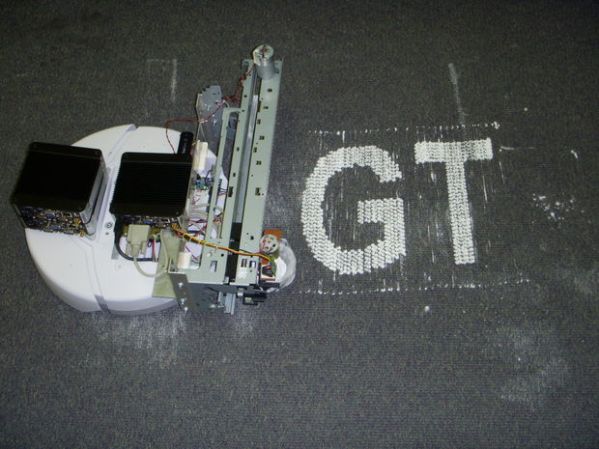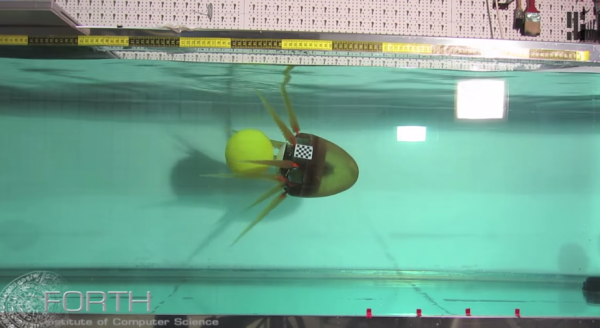We’ve all seen videos of those crazy Boston Dynamics running quadruped robots that can reach up to 28 mph. Those things are amazing and it’s almost impossible to imagine how to even start building one. [Max] loves his robots and wanted to build a quadruped but, being a robot hobbyist, didn’t have the serious cash needed to make an extravagant robot like those of Boston Dynamics. Instead he started bridging the gap by designing a quadruped robot that is a little bit slower and tons cheaper.
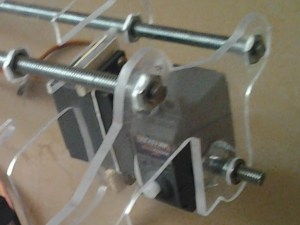 [Max] designed all of the mechanical parts himself. After weighing the advantages and disadvantages of different materials, he decided that the frame would be made from 5mm acrylic sheet. The main body of the robot has acrylic ribs that are spaced apart by threaded rods. Twelve RC servos make up all of the joints, 3 in each leg. Notice in this photo how there is one servo that immediately rotates another servo. To support the other side of the rotating servo, [Max] epoxied on a T-nut, stuck in a short length of threaded rod which is then supported in the frame by a ball bearing. Simple and effective! The upper portions of the legs are also made from acrylic sheet and the lower legs are from a cheap camera tripod. Rubber feet ensure a slip resistant stance.
[Max] designed all of the mechanical parts himself. After weighing the advantages and disadvantages of different materials, he decided that the frame would be made from 5mm acrylic sheet. The main body of the robot has acrylic ribs that are spaced apart by threaded rods. Twelve RC servos make up all of the joints, 3 in each leg. Notice in this photo how there is one servo that immediately rotates another servo. To support the other side of the rotating servo, [Max] epoxied on a T-nut, stuck in a short length of threaded rod which is then supported in the frame by a ball bearing. Simple and effective! The upper portions of the legs are also made from acrylic sheet and the lower legs are from a cheap camera tripod. Rubber feet ensure a slip resistant stance.
All of the servos are controlled by an Arduino Mega. [Max] is currently writing a sketch that will perform the complex math and determine coordinated servo motions for movements us humans take for granted, like ‘walk forward’. As you can see in the videos, [Max’s] robot won’t be catching the Boston Dynamics’ Cheetah any time soon but he is off to a great start.
Future plans for this project include bluetooth control and integrating the ultrasonic sensor proactively installed in the ‘head’ of the robot. Check out the videos after the break. [Max] is looking for some feedback on his project. We here at HaD think this needs a great name. Let’s hear some suggestions in the comments…

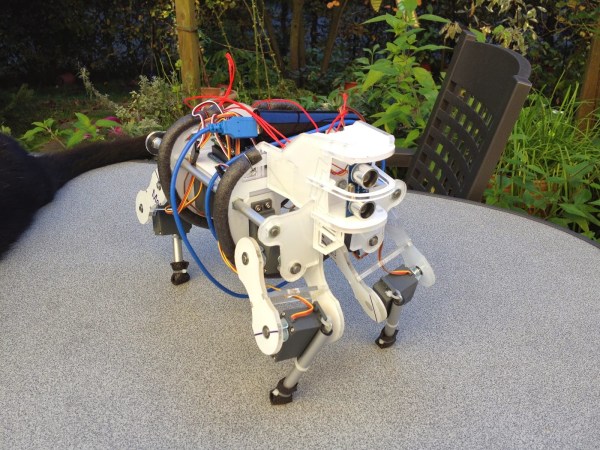
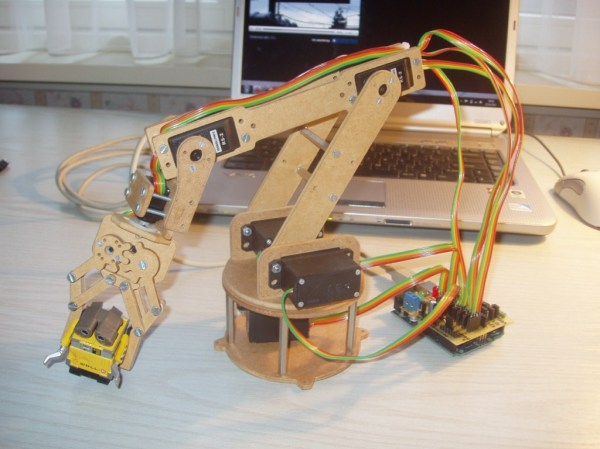
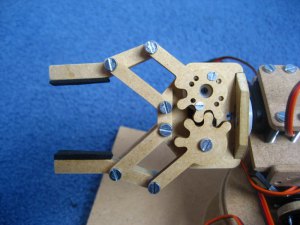 Like any project, there were some hiccups along the way. First, several revisions of the gripper were necessary to get the correct tooth profile that resulted in smooth and tight movement. Also, while making the shield the spacing between banks of headers came out one header too close! On this first board [jjshortcut] just bent the pins so they would fit into the Arduino. You can’t let some minor snafu prevent forward momentum of a project!
Like any project, there were some hiccups along the way. First, several revisions of the gripper were necessary to get the correct tooth profile that resulted in smooth and tight movement. Also, while making the shield the spacing between banks of headers came out one header too close! On this first board [jjshortcut] just bent the pins so they would fit into the Arduino. You can’t let some minor snafu prevent forward momentum of a project!

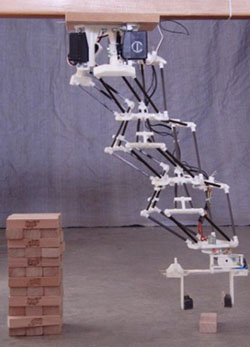 By now you’d think we’ve seen just about every means of robotic actuator possible. We have Cartesian bots, Stewart platforms, SCARA bots, Delta bots, and even
By now you’d think we’ve seen just about every means of robotic actuator possible. We have Cartesian bots, Stewart platforms, SCARA bots, Delta bots, and even 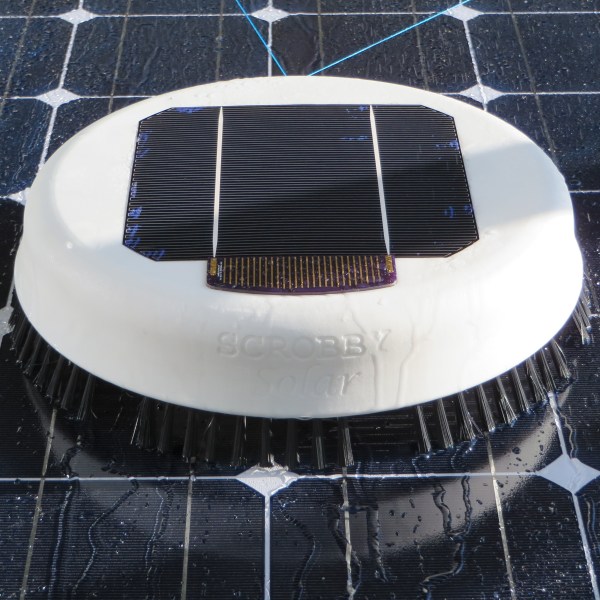
 This project is
This project is 